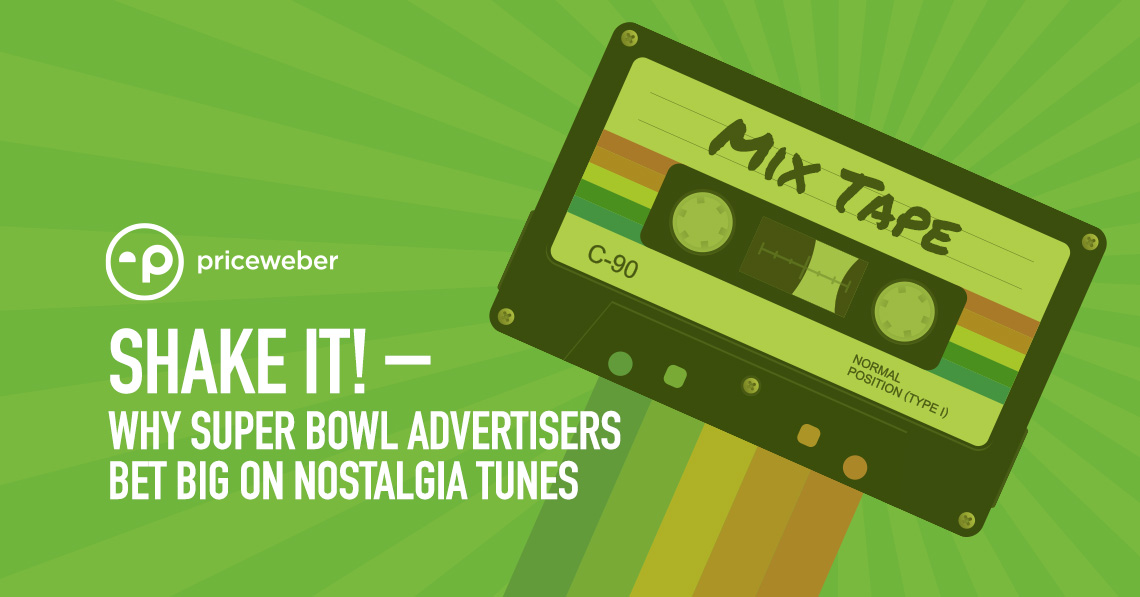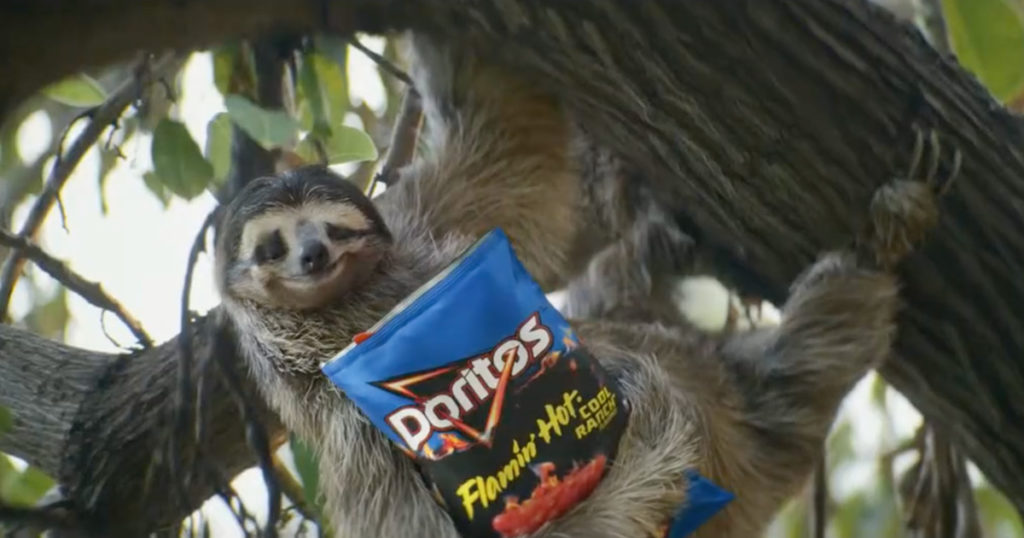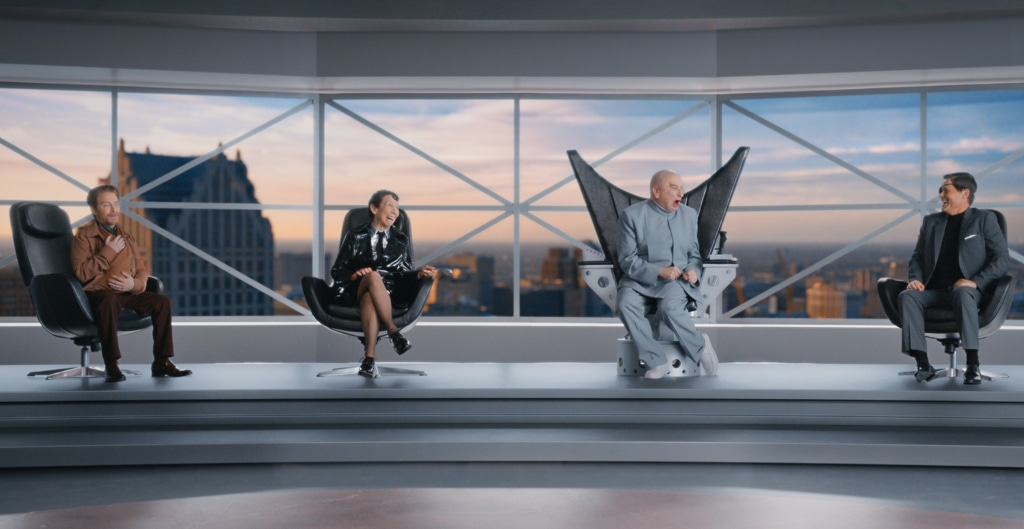It’s been a few years since we’ve seen this much effort and creativity invested in Super Bowl ads. Maybe it’s because the pandemic funk is lifting. Maybe it’s because 30 seconds cost advertisers an extra $1.5 million this year, but man, there were some great ads!
While we are still having trouble unseeing the awkward “hero” chip bags in the Lay’s and Doritos ads, Frito-Lay brands nailed their diversity efforts, along with Sam’s Club, InBev’s AB brands, Unilever’s Hellman’s, GM, Vroom and others. Additionally, it was no shock to see the metaverse make a debut of sorts in big-dollar ads by Meta, Crypto.com (with Matt Damon) and Bud Light NEXT. However, it was what we heard that really got our attention in this year’s Super Bowl ads. In this special Super Bowl edition of Plain Talk, we’ll foot-tap our way through our thoughts on the growth of nostalgia music in ads, how it supercharged big game commercials and what this could mean for you.
The soundtrack of 2022’s Super Bowl LVI ads
We counted more than a dozen spots this year using music beds that could best be described as “nostalgia music.” From Eddy Grant backing Arnold Schwarzenegger, Salma Hayek and the new BMW EV, to Salt-N-Peppa’s megahit “Push It” performed by woodland creatures for Flamin’ Hot Doritos and Cheetos, the big game ads this year were packed with nostalgic hits from the 70s, 80s and 90s.
Sloth snatching the Flamin’ Hot Doritos in the “Push It” Super Bowl Spot
Now we understand that a little nostalgia in advertising is nothing new, but this year the prevalence of nostalgic music in Super Bowl spots, even spots whose subject matter was decidedly modern, was hard to miss. So why would so many brands bet their massive Super Bowl ad spend on “old” music? Here’s why…
The role of music in ads
First, a note on the role of music in ads: If this year’s collection of big game ads proves anything, it’s that the right music plays a powerful role in everything from setting a mood to accentuating a punch line, but there’s some science behind the use of nostalgic music. According to Shahram Heshmat, Ph.D. in a Psychology Today article, music impacts the “implicit” long-term memory. These memories are automatic and unconscious, meaning we don’t have to try and remember them like freshman calculus. Also, implicit long-term memory is the most enduring form of long-term memory. Additionally, Dr. Heshmat says that implicit memory is a form of classical conditioning where “…an event, an emotion, and a song get connected.” The effective use of any music in an ad can create these positive memories and associations and forever link them with your brand in someone’s implicit memory. So, while in the early days of broadcast when we probably thought that music under ads just sounded nice, over time, we’ve come to realize that there are significant psychological benefits as well.
Why use nostalgia in ads?
Since we can all agree that the right music can make a good ad great AND memorable, what role does nostalgia play? Nostalgia has played a significant role in ads for decades. From Country Time Lemonade making you wistful for the summertime of your childhood to the powerful “God Made a Farmer” ad by RAM Trucks featuring beloved radio host Paul Harvey, ads have made us tear up, smile, laugh and remember, all while associating these powerful feelings with the brand that delivered them to us.
This year is no different as we see T-Mobile reuniting Turk and J.D. of TV favorite “Scrubs,” General Motors resurrecting Mike Myers and the entire evil gang from “Austin Powers” for a memorable laugh, and Verizon jumping in the way-back machine to 1996 to deliver Jim Carey’s character from “The Cable Guy.” These pop culture “stimuli” trigger what psychologists call “personal nostalgia,” where the person feeling nostalgia is cast back to a warm and idealized version of their past when they perceive “things were simpler” (or easier or just better). So, what’s leading to the big rise in nostalgia music today?
From General Motors Dr. EV-il Super Bowl Spot
Why is nostalgia especially hot today?
Get ready for a shock, but the answer to this question is pretty much the same answer to every question about seismic shifts in society and culture today – the COVID-19 pandemic. Yup, this is one more thing that the ‘rona has impacted. According to one recent study, feelings of (or a need for) nostalgia are likely to be much more acute during “times of hardship and difficult transitional periods.” Sound familiar? Two years of significant changes to the routines, home, work, social lives and general freedoms of Americans have dialed up our collective need to harken back to better times. And where music is concerned, the growth is mammoth. One study scraped 17 billion Spotify downloads, showing that with every 1% increase in COVID-19 infection, there was a corresponding 1.5x impact on downloads of “nostalgia music.”
Compounding that is called “historical nostalgia,” which allows people to feel nostalgic for times they did not personally experience. In this case, the “people” are mostly younger millennials and Gen Z adults. Thanks to Spotify and the million or so streaming video services that have thrived during the pandemic, these young and influential adults have crammed a couple of decades of totally awesome TV and music into just two years. This has allowed them to see and enjoy the film and TV versions of the “simpler times” (think John Hughes movies) that their parents or older siblings experienced and to feel a kind of second-hand nostalgia for those times.
The “detention dance” scene from John Hughes’ “The Breakfast Club” – Universal Studios
One critical part of pop culture that has endured and been reinvigorated is the music of the late 70s, 80s and 90s – the rock, funk, new wave, hip-hop, and high-energy dance music that permeates the Super Bowl commercials this year. The preexisting personal nostalgia of older generations and the new historical nostalgia for younger generations towards this music means it makes sense today to support great conceptual ads with the nostalgic music that pays them off.
But will it last?
We think this trend will last for the foreseeable future. In fact, even though researchers expect overall nostalgia content consumption to slow down as the pandemic abates, music consumers may not stop experiencing and loving the music of the past. You simply can’t put the genie back in the bottle. Millions of people have been exposed to or reacquainted with the music and culture of recent decades in heavy doses. According to Atlantic Magazine, the new music market is actually shrinking while more than 70% of the U.S. music market is made up of “old music.”
And since nostalgia is, psychologically speaking, a function of long-term unconscious memory, we think it’s likely to be more relevant to advertising in the post-pandemic era than it was before COVID-19.
But for now, we made you a special Spotify “mix tape” of some of our favorite nostalgia songs from this year’s big game ad roster. To hear it, just click the cassette and enjoy!
If you are wondering if nostalgia might be a fit for your brand’s marketing campaign, you can always give us a call at 502-499-4209 or drop us a note here!





